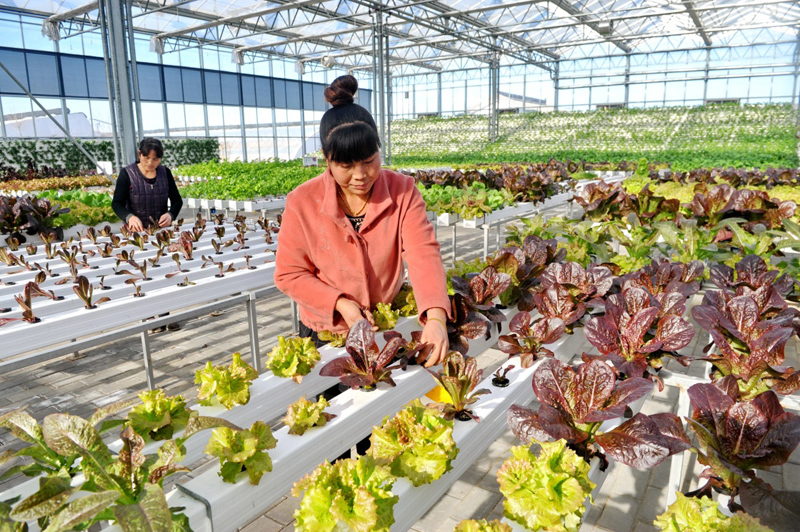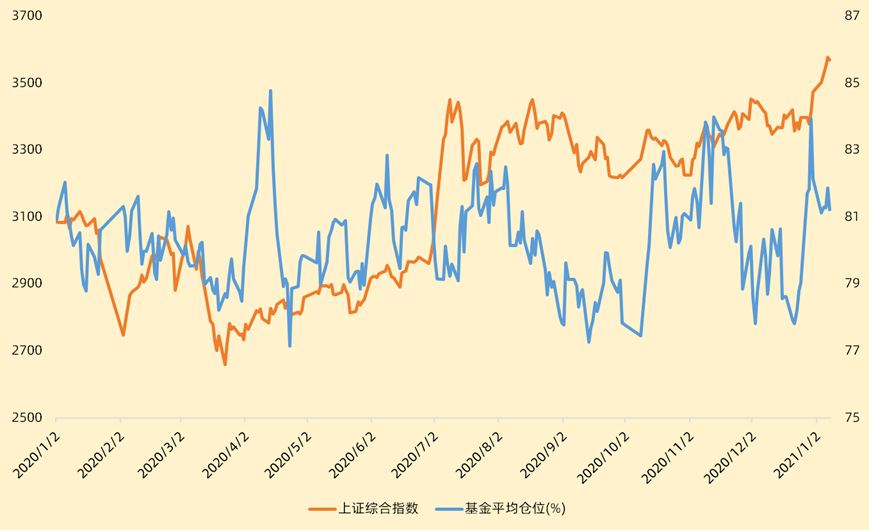在齐鲁大地上,有17万多个温室大棚分布在弥河两岸。 这是“中国蔬菜之乡”山东潍坊寿光独有的奇特景观。 寿光改变了北方冬季吃不到新鲜蔬菜的历史,将蔬菜产业做到了极致,以菜惠民,以种植培农。 寿光只是一个普通的农业县市,却让农民实现了“一亩地奔小康”的梦想。 6月17日,本报推出“齐鲁不凡”系列调研报告之二——《寿光制造》。
寿光市现代农业高新技术实验示范基地。 (个人资料图片)
我国最早的农业百科全书《齐民要术》,由寿光人贾思勰所著,受到后人的赞誉和赞誉。 与这部农耕文明的历史杰作相得益彰的是,今天的寿光正在用蔬菜改变中国。 密河两岸,17万多个大棚散布在空旷的乡村。 这是“中国蔬菜之乡”山东潍坊寿光独有的奇特景观。
每年前来采菜的客人超过200万人次,蔬菜日成交量超过1500万公斤。 通过寿光走向全国的蔬菜,影响着亿万人的餐桌。 以种植成就农民。
如何构建现代农业的产业体系、生产体系、管理体系,如何面向农业方向转变、新一轮种业革命、农民增收大局,使农业强、乡村美、农民富? 近年来,寿光创新升级“寿光模式”,融合产业链前、中、后端,勾勒出蔬菜全产业链的“微笑曲线”。 中间,构建以农民合作社、家庭农场为主体的新型农业经营体系,解决小农户的困境; 在前端,聚焦标准制定、种子研发,抢占行业制高点; 后端,注重品牌培育和品质提升和巩固竞争优势...
寿光的“植”造,有独特的天洞。
温室升级蔬菜革命——让农业告别“靠天”
说到改变中国北方冬天吃不到新鲜蔬菜的历史,就不得不提到寿光市孙家集街道三元朱村党支部书记王乐毅。 是他将冬暖蔬菜大棚发扬光大。
当我见到这位老人时,他刚刚接待了一群从外地来村里参观学习的客人。 虽然他已经80岁了,但精神依然很好。 他记忆犹新,侃侃而谈,向记者讲述了往事。
1978年9月5日,王乐毅当选为村党支部书记。 “我上任时最大的愿望就是找到一个合适的行业。” 王乐毅回忆,寿光有种植蔬菜的传统,冬天有人搭建“土棚”种菜,但要烧煤取暖,只能生产叶类蔬菜。 不大。 你能对温室大惊小怪吗?
当时,三元朱村建设冬暖大棚有很多困难:一是找老师难。 农民只知道如何种植大田。 他们到哪里去找师傅呢? 二是土地困难。 谁愿意用土地来做以前从未做过的事情? 三是资金困难。 谁能花6000元给刚吃饱饭的农民盖个棚子?
尽管困难重重,王乐毅并没有被难倒。 1989年8月13日,在国外学习了温室技术的王乐毅带领17名党员搭建了冬暖温室,精心播下了第一茬种子。 同年12月24日,首批黄瓜上市,售价10元每斤。 来年夏天结账时,每个大棚收入2.7万元,17户种植户变成了17户双万元。 人们沸腾了。
那时,萝卜、白菜、腌菜是北方人冬季餐桌上最受欢迎的三种食物。 春节到了,即使在北京,黄瓜的数量也很少。 走亲访友时,携带几根黄瓜是一份厚礼。 限于当时的认识,大多数专家认为:“在北方,冬天不加热就不可能生产蔬菜。”
将“不可能”变成“可能”,而且还具有可复制性和可扩展性,这是多么大胆的事情啊。 1991年,当寿光人尝到大棚蔬菜带来的丰收喜悦时,他们就把自己最宝贵的财富——农民技术人员送出了家乡。 从万仞冰峰到戈壁绿洲,从辽阔的草原到幽静的山谷,寿光掀起了一场影响全国的蔬菜革命。
如今,看到寿光第一代至第七代温室后,人们不禁感慨:温室之间的差异可能比田地和温室之间的差异还要大。 “外面差不多30摄氏度,但温室里还不到20摄氏度。” 在寿光市罗城街道寨里村的带电蔬菜大棚里,村民王东友看着棚里的樱桃番茄像一串串灯笼,眉头都在笑。 “你看这个智能设备,自动吹风机,电动遮阳帘,手机上的几个操作,就可以给棚里的西红柿降温。” 如今,“指尖种菜”正在成为蔬菜小镇的时尚。
随着农村电气化的发展,手机成为了新的农具。 2019年5月,国家电网、农业农村部确定了全国3个农村电气化示范县,寿光是其中之一。 国网寿光公司洛杉矶供电站保安员张曦告诉记者,通过能源控制器连接棚内电气化设施后,可以实时采集温度、湿度等42项环境数据,农民可以通过手机控制棚子。 寿光市1.6万座电气化大棚全部改造后,每年可为全市农民增加收入3.36亿元。
如今,寿光温室已发展到第七代,人工智能、物联网技术开始广泛应用。 当地坚持用现代物资装备武装农业,用现代生产方式改造农业。 一批智慧园区建成并投入使用。 新一代温室几乎与制造业同时进入智能化时代。 吃饭的状态。
在众多的智能温室中,最受关注的就是其中之一。 输入密码或校对人脸信息后,大门打开,进入这座占地120亩的寿光智能玻璃温室。 这个由中国工程院院士赵春江团队设计的智能玻璃温室,应用了120多项专利技术。 它结合了荷兰温室土地利用效率高和寿光温室高效节能两大优点,比荷兰温室节能50%以上。 。
这里,23万余株番茄苗整齐排列在温室内,并受到正压环控系统、智能水肥供应系统、可视化智能管控云服务系统的保护。 温室内安装了车辆行走和加热轨道、智能田间作业装置等设备,由20多台机器人控制。 中央机器人“小金”虽然体型小,但却是这二十多个机器人中的小管家。 它可以采集园区内所有机器人的数据信息,生成指令并处理后反馈给它们,实现番茄生产全过程的智能管控。
从寿光开始的“菜篮子”革命极大地提高了中国人民的生活质量。 1978年,我国保护蔬菜面积仅有4万亩,人均占有量0.4斤; 如今,保护蔬菜面积已增至5800万亩以上,人均占有量360斤。 国家农业技术推广服务中心原首席专家、研究员张振和表示,在以寿光为代表的先行地区的带领下,我国与中国一道走出了一条节能高效的蔬菜供应之路。特色,实现全年有效供给,成功解决问题。 解决了超过10亿人的粮食问题。
立体经营、多元服务——让万千小户拥抱日新月异的大市场
作为冬暖大棚蔬菜的发源地,寿光展现了“先飞优势”。 以其规模大、数量大、品种全,在国内外市场占有重要地位。 但这并不意味着您可以高枕无忧。 面积和产量是最容易被超越的。 设施、大棚不堪重负,寿光该怎么办?
习近平总书记指出,要加快建立以农民家庭经营、合作联盟为纽带、社会服务为支撑的立体复合型现代农业经营体系。 按照习近平总书记的要求,寿光重点发展农民合作社和家庭农场两类农业经营主体。
“我们把培育新型农业经营主体作为推进农业现代化的抓手,全力推动小农户和大市场有效对接,让分散农户搭上规模化的快车。行动。” 寿光市委书记赵旭春介绍,合作协会已经成立。 以领导为支撑、以15个镇街合作分社为骨干、以潍坊市级以上68个示范合作社为骨干的优质合作社架构,带动了80%的农户进入产业化经营体系,扭转了“一户一户”的局面。一家人孤军奋战”。
在翠岭西村的智能温室里,村民崔江源打开手机上的智慧农业APP,只需点击软件,就可以控制温室内蔬菜种植的各个流程,省时、省力、省力,并大大提高效率。 “在合作社的帮助下,2万斤西红柿正在温室里等待收获,将运往俄罗斯各大超市。” 崔江源说道。
“优质蔬菜,一路北上”。 在位于翠岭西村的忠旺蔬菜专业合作社,蔬菜运输路线图上印着这句话,从寿光到满洲里到俄罗斯赤塔再到莫斯科。 这个国家级农民合作示范社的主要市场是俄罗斯。 令人难以想象的是,这个合作社每年向俄罗斯出口蔬菜近2万吨,销售额超亿元。
目前,合作社有成员户161户,成员蔬菜平均价格每斤比国内市场价格高出0.2元,为每个成员家庭每年增加收入近3万元。 合作社自成立以来,坚持统一种植标准、统一质量控制、统一品牌销售。 为满足社员资金需求,农业银行寿光支行“对症下药”,为合作社提供300万元“强村贷”,解决了融资难题。
如今,农民合作社非常普遍。 全国农民合作社总数已发展到225万个,覆盖近一半农户。 但一些合作社形同虚设,未能带动农民群体发展。 寿光实施农民专业合作社完善专项行动,做好“规范、整顿、提升”三篇文章。 2020年,成立了全国首个蔬菜合作联会。 107家合作社成为会员单位,15个乡镇街道成立了联合会。 分会方面,共有340家合作社加入了分会。
吉泰镇有一个集生产、加工、销售、物流于一体的国家级农民合作示范社——灵新蔬菜专业合作社。 与寿光市供销社共同投资2.1亿元,规划建设100亩农场。 为民服务中心项目为周边农户提供技术培训、农资直供、农残检验、冷藏运输等服务。 吉泰镇党委书记李伟祥表示,创新合作社模式,发展多种类型、多种功能的合作社,引导农民“抱团进场”。 截至目前,全镇已发展各类蔬菜合作社191个,服务社员21000余人。
走进寿光的每一个村庄,菜农的表情都是平静、轻松。 经过30多年的发展,农业社会化服务体系让每个家庭的小生产者都能从容应对瞬息万变的大市场,融入蔬菜小镇全产业链。 市场之手让多元化服务主体拥抱农业。 比如,围绕大棚建设,有大棚膜、卷帘机、保温被、化肥、养殖育苗等专业企业或农民合作组织。 在这里,只要农民有需要,就可以享受良种繁育、农机装备、支付结算、加工运输、专业展览等全链条服务。
建好市场,搞活第三产业——让农村一二三产业融合发展
现代农业生产体系着眼于提高农业生产力,现代农业管理体系着眼于改善农业生产关系,两者共同支撑现代农业产业体系的发展。 这在寿光体现得淋漓尽致,建市场、做电商、办展会……
凌晨3时许,寿光农产品物流园内,来自全国各地的蔬菜运输车辆陆续进出。 这是全国最大的专业蔬菜批发市场,交易蔬菜品种300多个,日交易量近万吨,年交易额近百亿元。
在寿光,没有不能买、不能卖的菜。 物流园区副总经理李成涛表示,寿光本地蔬菜仅占交易量的3%至5%,是名副其实的“买全国、卖全国”。 作为南菜北运、北南菜中转的农产品集散地,园区设有交易大厅6个,可满足大额进口、大额出口的需求。 交易区内商户的所有交易均实现电子化,通过网络连接电子结算中心,实时交易、实时结算。 物流园区辐射20多个省份,影响亿万人的餐桌。
李成涛回忆,新冠肺炎疫情发生后,2020年1月27日晚,有关部门紧急协调山东至武汉的蔬菜运输。 山东省立即安排潍坊市从寿光调集优质蔬菜。 次日中午,第一批350吨寿光蔬菜装车出发……武汉封城期间,寿光共向武汉发送各类蔬菜产品5721吨。 只要有需要,寿光菜农都会在第一时间采摘最好的蔬菜并运出,而物流园区承担了其中的很多任务。
它是产品的集散中心和价格形成中心。 物流园区价格指数部副经理陈静介绍,在商务部批准和指导下,物流园区联合浙江工商大学编制了《中国寿光蔬菜指数》,这是我国首个蔬菜指数-主题价格和流通指数。 该指数选择具有代表性的蔬菜并赋予它们权重。 它是通过收集价格、交易量、交易金额等数据来编制的。 涵盖蔬菜12大类、114个中类、233个小类。 已成为全国蔬菜价格和交易走势的风向标。 在每一个保供稳价的关键节点,相关部门经常打电话询问情况。
寿光已形成以综合市场为龙头、1356个地方市场为基础的市场体系,成为全国重要的蔬菜集散中心、价格形成中心、信息交换中心和物流配送中心。 2018年被评为国家供应链创新应用试点城市,2020年获批国家电子商务进农村综合示范县。 在专注传统市场的同时,寿光也在积极探索电子商务等新的营销模式。 全市5000余种蔬菜苗木实现网上销售。 其中,最知名的是山东贤福农业有限公司,2019年以来其电商销售额已超亿元。
在罗城街道寨里村的“鲜福”农业电商直播院,记者看到多位主播在网上带货。 寨里村党支部书记张华祥表示,该村瞄准直播风口,在保留原有民宿特色的基础上,将闲置的院落改造成电商小院。现场直播。 2019年,一期8套电商庭院竣工投入使用; 去年,二期9套直播庭院投入使用。 目前已有9家电商机构入驻开展农产品在线直播,与周边农业科技园区形成良性互动。
山东鲜福农业有限公司员工隋亚男表示,鲜福已入驻16家电商平台,生鲜产品136个品种,其中寿光蔬菜52个品种。 是北碚南瓜经营第一的电商公司。 “随着北碚南瓜订单量的增加,寿光当地已经无法满足发货需求。但为了口感一致,我们也不能随意购买其他南瓜。通过大数据分析发现,河南、甘肃、内蒙古等地收购了寿光北碚,南瓜籽还没有种植,所以采购商先到现场测试、品尝,符合标准后再采购。现在,这些地方的种植户不但不用愁卖不出去,更不用愁卖高价。”
每年的4月20日,都是寿光人生活中的一个大日子。 自2000年以来,中国(寿光)国际蔬菜科技博览会定期举办,吸引了超过3000万参观者领略蔬菜科技文化的独特魅力。 在这里,只要你愿意,你就可以看到一颗种子是如何培育、种植、管理、采摘、运输的。

每天开放的菜博馆是来寿光的人必去的地方。 植物工厂、空中草莓、服菜养鱼、树木栽培、墙体栽培等80余种新模式,电气化高效栽培技术、空间电场高效栽培技术等100余项新技术,垂直蔬菜农场,自动喷洒降温,单株产量6000多斤的番茄树,年循环产量1200多斤的空中红薯,400多斤的巨型南瓜等新奇特农产品。充分展现农业科技的神奇魅力,让人流连忘返。
寿光的探索逐步将设施温室从单纯的农业供应功能拓展为多功能,助力农村一二三产业融合发展。 从内部看,延伸产业链,连接供应链,完善价值链,集生产、加工、贸易、展览于一体。 从外部看,蔬菜等农业产业的先行发展,正在向以县为单位综合发展多种农村经营业态转变,使农业生产要素在更高层次上实现优化配置。
科技自强 种业翻身——让种业成为蔬菜硅谷的明珠
一粒种子可以改变世界。 习近平总书记高度重视种业问题,强调要下定决心发展民族种业。 2020年中央经济工作会议提出,开展种源“卡脖子”技术攻关,决心打好种业扭亏为盈的攻坚战。
寿光是全国著名的蔬菜之乡,也是世界蔬菜种业的焦点。 我国种业市场全面对外开放之日,恰逢国际种业巨头全球扩张。 作为全球种业聚集地,已有30多家国外种业公司在寿光设立育种研发基地,推广蔬菜品种370多个。
寿光市农业农村局局长王立新回忆,过去很长一段时间,菜农不得不接受“以粮代卖”的“洋种”。 当时进口种子确实有很多优点,比如耐储运、抗病力强、种植效率高等。 数据显示,到2010年,“洋种”占据了寿光设施蔬菜市场的一半以上,尤其是彩椒、红果番茄和部分茄科蔬菜。
高端品种受制于人。 这不仅是寿光蔬菜产业的痛点,也是当时整个全国种业面临的困境。 2011年,国务院《关于加快现代农作物种业发展的意见》全文发布,首次明确了种业的战略地位,并打出了一系列组合拳。
育种是一场持续的创新能力的竞争,通常需要几年的时间才能培育出一个好的品种。 很多国有科研机构和国内顶尖育种公司还做不到,但寿光却在“打赢种业扭亏为盈”中展现了一个县级市的责任和担当。
“变化发生在这10年里。2020年,寿光有71个蔬菜品种被农业农村部授予植物新品种权,超过了往年的总和。寿光蔬菜品种研发迎来了新的台阶。”在爆炸中。” 寿光市蔬菜产业发展中心副主任范立国说。
“十年磨一剑”,寿光做对了什么?
第一步是发展本土养殖企业。 为凸显企业创新主体地位,2012年、2014年、2017年,寿光市政府连续出台了三项蔬菜种业扶持政策,并安排专项资金重点推广。
寿光培育了蔬菜种业集团、三木种苗、永盛农业等7家种子企业,自主研发蔬菜品种140个。 全市有蔬菜育苗单位401个,年育苗能力达17亿株。 与之配套,寿光运营了山东省首个果蔬品种权交易中心,建成并投入使用了全省最大的蔬菜种质资源库。
寿光蔬菜种业集团拥有农业农村部园艺作物生物学与种质创制领域唯一的企业重点实验室。 该集团副总经理王雷表示,与菜博会同期举办的菜博会主展区在寿光菜镇。 品种长势、品种抗性、果实大小、口感等数据实时上传存储,实现生产、种植、展示、推广大数据采集、分析、存储、处理,让企业查看新产品随时随地品种。
第二步是引进国家级育种机构。 中国农业科学院寿光市蔬菜研发中心位于寿光市罗城街道寨里村。 来自北京等地的专家和研究生几乎每天都在实验室和温室基地之间忙碌着。 2019年4月落户的研发中心,结合了中国农业科学院的科研优势和寿光市蔬菜产业的优势。 中国农业科学院蔬菜花卉研究所未来计划将基础研究重点放在北京,逐步将应用研究转移到寿光。
“当时有多种选择,最终落户寿光,主要是看中寿光在蔬菜领域的生产优势和市场优势。科研是在行业里做的,论文是写在地里的。寿光是“这里是蔬菜技术应用的最前沿,也应该是蔬菜育种的一块宝地。” 现任寿光市副市长的中国农业科学院蔬菜花卉研究所研究员刘伟表示,去年以来,这里实施了10多个国家级项目,已育成黄瓜新品种18个。
承载着民族种业的希望,寿光种业振兴正在加速推进。
寿光国家质量标准——让农业兴业
习近平总书记强调,要深入推进农业供给侧结构性改革,推进品种培育、质量提升、品牌建设和标准化生产。
从注重产量到注重质量、从数量到质量、从产品到标准,寿光在推进农业供给侧结构性改革方面迈出了坚实的步伐。 “如果说以前的‘寿光模式’注重输出产品、人才、技术,那么现在的‘寿光模式’正在转向输出标准、机制、制度。”赵旭春说。
“我们关心蔬菜的质量和安全,就像关心我们的眼睛一样。” 寿光市农业农村局农产品质量监管科科长陈永波介绍,早在10年前,寿光就拨出专项资金,实施耕地质量提升工程,控肥、控药、控水,从严抓保障。来源。 同时,全面实施蔬菜质量全球网格化监管。 全市划分28个网格,网格内温室生产、蔬菜交易、农资管理等全部纳入监管,实现“生产有记录、信息可查询、流向可追踪” ”。 , Responsibility can be investigated” the whole traceability system.
Quality and safety is the "lifeline" of agricultural development, and it is also a key factor that determines how bright the "Shouguang Vegetable" signboard is. This has reached a consensus in Shouguang. In Dili Agricultural Products Logistics Park, the testing room can quickly detect pesticide residues, and the results can be obtained within 25 minutes. At present, more than 1,000 batches of vegetable samples are tested daily, reaching more than 300,000 batches throughout the year, with a pass rate of over 99%.
Whoever can control the quality will occupy the commanding heights; whoever can set standards will have the right to speak. In July 2018, the National Vegetable Quality Standard Center settled in Shouguang, jointly established by the Ministry of Agriculture and Rural Affairs and the People's Government of Shandong Province, and is the only national platform in the field of vegetable quality standards. Li Meiqin, deputy director of the center, said that the first task of the center is to speed up the formulation of standards, use standardization to help high quality and high prices, and increase high-quality supply. At present, the center has set up an expert committee led by 4 academicians, started the research and development of 118 standards, and completed the compilation of 54 production technical specifications for 37 kinds of vegetables. At the same time, it is in line with Japan, South Korea, the Netherlands, etc. to meet the vegetable quality standardization parameter requirements.
Growers don't know what the standard is, and consumers don't know where the standard is. This is the bottleneck that made it difficult for agricultural products to achieve high quality and high price in the past. "The problem is the orientation," said Xia Haibo, head of the standard department of the center. The center has the only vegetable quality sensory evaluation and analysis laboratory in China, and has carried out tomato and cucumber quality sensory evaluation activities to grasp consumer preferences. In January of this year, two industry standards for the entire industry chain of solar greenhouse tomatoes and cucumbers formulated by the center were officially implemented, filling the gap in the country, and 29 test demonstration bases were also identified across the country.
Pengyuan Fruit and Vegetable Cooperative is one of these 29 bases. Yujia Village, Shengcheng Street, where the cooperative is located, is a professional vegetable village with a 25-year history of growing greenhouses. In 2018, Gao Xiangpeng, chairman of the cooperative, built a demonstration shed in the village to demonstrate standardized production. Today, members of the cooperative have all planted tomatoes in accordance with the standards set by the National Vegetable Quality Standards Center. "After growing tomatoes for so many years, at first, everyone didn't take the standard seriously. I produced according to the center's standard. Although the output was half that of other farmers, the sugar content and other indicators were more than doubled, and I sold several times. The price can open the eyes of old vegetable farmers." Gao Xiangpeng said.
Liu Qi, a special researcher at the Counselor's Office of the State Council and a member of the Expert Advisory Committee of the Ministry of Agriculture and Rural Affairs, said after investigating the National Vegetable Quality Standard Center that Shouguang has been a leader in the field of vegetables since its development. First-class agriculture must set standards. Shouguang has both technology and standards, and it radiates across the country. This development path has reference significance for the whole country.
Indeed, Shouguang actively promotes production standards and solutions to the whole country. More than 8,000 technicians build large-scale vegetable bases or guide vegetable production all year round. More than half of the newly-built greenhouses in the country have "Shouguang elements". From the empirical model of relying on the sky to the era of scientific and controllable standardization, the Shouguang vegetable standard is gradually rising to the national standard and industry standard, and there are infinite possibilities in the future.
Green-collar demeanor for increasing farmers' income——making farmers an attractive profession
"Agricultural and rural work, say one thousand, say ten thousand, increasing farmers' income is the key. It is necessary to speed up the establishment of a long-term policy mechanism to promote farmers' sustained and rapid income increase, so that the majority of farmers can become rich as soon as possible." In June 2018, President Xi Jinping The secretary emphasized during his inspection in Shandong.
Whether it is revitalizing the seed industry or leading standards, the purpose is to increase farmers' income. Li Peng, the mayor of Shouguang City, said that increasing income is the source and direction of the development of Shouguang's vegetable industry. Shouguang insists on whether farmers increase their income and how much it increases as an important yardstick for promoting rural revitalization.
One mu of garden is ten mu of field, and one mu of shed is ten mu of garden. The reason why the greenhouse can be opened quickly is closely related to the high efficiency. In the enviable era when "ten thousand households" were enviable, the annual income of vegetable farmers in Shouguang was as high as more than 30,000 yuan. In the first three years, the number of winter heating greenhouses in Shouguang City increased from 17 to 75,000. After nearly 30 years of innovation and development, there are currently 173,000 vegetable greenhouses in Shouguang, with an annual output of 4.5 million tons. Vegetables have become a pillar industry for farmers to increase their income.
How rich are Shouguang farmers? "According to estimates, take an ordinary 120-meter-long cucumber greenhouse as an example, with an area of about 2.5 mu, and the net income in two seasons can reach 100,000 yuan. A family generally plants 2 to 3 greenhouses, and the net income is about 20 yuan in a good year. 10,000 yuan, more can reach 300,000 yuan." Sun Lei, member of the Standing Committee of the Shouguang Municipal Party Committee and Director of the Propaganda Department, said that last year, the deposit balance of banking institutions in Shouguang City was 128.89 billion yuan, making it the county with the largest deposits in Shandong Province. The per capita disposable income of rural residents is 23,900 yuan, the average deposit per household is 230,000 yuan, and the income ratio of urban and rural residents is 1.87:1, which is far lower than the national average of 2.56:1. In April this year, the balance of deposits increased by another 10 billion yuan.
When it comes to farming, people get the impression that it is low-profit, but in Shouguang, vegetable growing is a high-income industry. Shouguang subverts people's stereotypes of agriculture and rural areas, not only earning money, but also providing equal public services between urban and rural areas. It has both idyllic scenery and rich industries, which make locals reluctant to leave and foreigners yearn for. Shouguang has no unique advantages in geographical resources, no dominant industrial and commercial economic foundation, and no urban economic circle to rely on. It is just an ordinary agricultural county and city, but it allows farmers to realize their dream of "running for a well-off life on an acre of land". , itself also ranks among the top 100 counties in the national county economy.
Vegetable greenhouses have brought income to farmers, popularity to the countryside, reunion to families, and strength to counties. A better and more affluent countryside attracts more and more young people to return to the land, and the identity choice of "farmer" has also begun to become a career choice. Not only the local vegetable farmers are fully employed, but also a large number of labor force from other places have been absorbed. The land of Shouguang has become a hot spot for young people to pursue their dreams, and it has also become an ideal place for local farmers to find employment nearby.
Li Wanqing from Dongzhenguan Village, Luocheng Street is a "post-85" who used to do auto repairs in Qingdao, Qingzhou and other places. He returned to his hometown in 2013 and ran two greenhouses with his parents, with an annual gross income of more than 270,000 yuan. Since 2016, he has worked in 3 high-standard greenhouses, with an annual gross income of more than one million yuan. Ventilation, watering, and quilt retraction, etc., which originally required manual operations, all use remote control technology, and the production of the greenhouse can be managed with a mobile phone. Currently, he is working with an institution in Beijing to jointly develop the Internet of Things and intelligent medicine spraying robots.
With many young people, there are many ideas, and the wisdom of farming is everywhere. The never-ending efforts have opened the door to a whole new world. Live delivery of goods, drone plant protection, robot planting... The older generation of farmers lamented: "To be honest, it's not other young people. Sometimes we don't dare to do it when we think about it, and others dare to break into it."
According to the "China Rural Development Report 2020", by 2025, China's urbanization rate will reach 65.5%, and the proportion of agricultural employment will drop to about 20%. Many people are worried, "The post-'80s' don't want to farm, the '90s' don't know how to farm, and the '00s' don't care about farming." "Who will farm the land" has become a dilemma that needs to be solved urgently.
And in Shouguang, farmers are becoming an attractive occupation. According to statistics, the number of rural migrant workers in Shouguang has decreased from 31,000 five years ago to 12,000, with an average annual decrease of 17.9%. The number of returning farmers has increased by 20.6%. At present, there are about 107,000 greenhouses in Shouguang, of which "post-70s", "post-80s" and "post-90s" account for 53.7% of the total.
In order to cultivate high-quality farmers, Shouguang has explored the training mode of "enterprise order, institution list, mass selection, and government payment". Relying on platforms such as Shandong (Shouguang) Rural Cadre Academy, Shouguang innovatively implemented a new vocational education model of "campus + pastoral" , Compiled the "Shouguang Characteristics" agronomy teaching materials, and accelerated the training of a group of new "green-collar" farmers. At present, 100,000 farmers in the city have green certificates, and more than 180 farmers have become "farmer science and technology experts".
For 80-year-old Wang Leyi, going around the greenhouse is still his habit. He said: "The most important thing is to look at the faces of the folks. I feel very comfortable when I see them smiling. I feel that I have done the right thing."
民族要振兴,乡村必须振兴。 The people rooted in this land firmly believe that a seed sown today is a hope for tomorrow.
Shouguang "planted" built, the sky is high and the earth is wide, and there is a lot to do!

 微信扫一扫打赏
微信扫一扫打赏
 支付宝扫一扫打赏
支付宝扫一扫打赏


